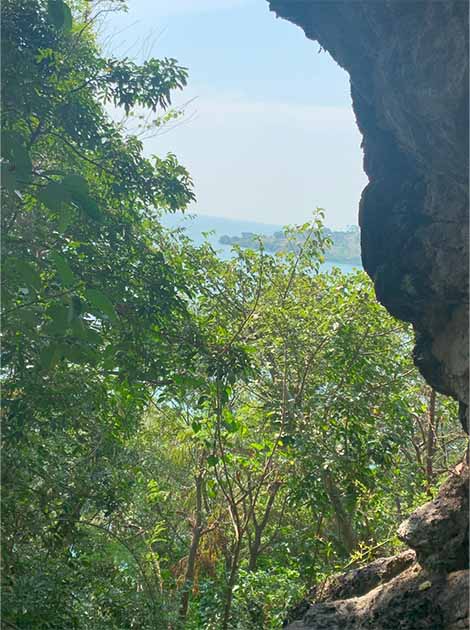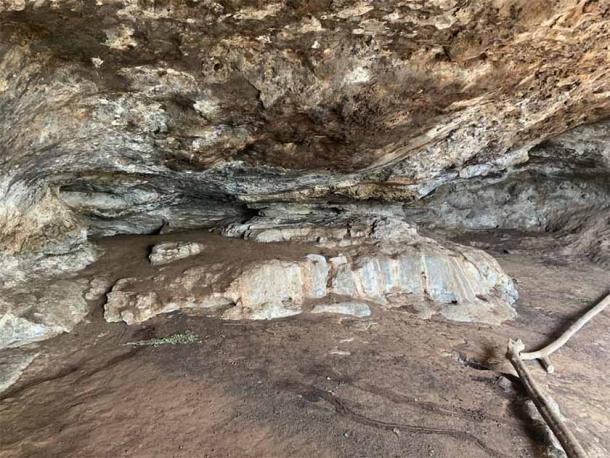
Ancient Cave Art at Mfangano Island Kenya, Revered For Generations
Mfangano Island in Kenya’s Lake Victoria hosts some ancient rock art that is an estimated to be 4000 years old. It consists of concentric circles built by a culture long gone but still revered.
Lake Victoria is the largest lake in Africa, with a volume of 69,484 square kilometers (26828 sq mi), making it the second-largest freshwater lake on the planet. Its coastline is shared by Uganda, Tanzania, and Kenya. Mfangano Island, which covers an area of 65 square kilometers (25 sq mi), is situated next to Rusinga Island, where the tomb of the independence hero Tom Mboya is located.
The art tells the tale of an early group of hunter-gatherers that preceded the present culture - a group similar to the Twa pygmies and their relatives that lived in neighboring Congo, Rwanda, and the forests. Twa made these circles before the Bantus came into the region around 1000-2000 years ago.
- Famous Lascaux Rock Art of France Comes to Africa in Ultra-Realistic Replica
- Shamanic Explorations of Supernatural Realms: Cave Art - The Earliest Folklore
Present-day inhabitants continue to value this landmark, showing cultural continuity. However, the original significance and purpose to the pygmies are shrouded in mystery. The red ochre circles with spirals are believed to represent the sun, while the white ochre represents the moon. Similar art patterns have been observed all over East Africa, including a site located 70 kilometers (43.5 miles) from the capital city of Nairobi.
The name Mfangano or Ivangano means ‘reconciliation’ and the island was named this after a 17th century feud was resolved in a major ceremony.
The Wasamo: Rainmakers and Guardians of Mwanaga
The custodians of the painting site at Mwanaga are the Wasamo, the rainmaker clan among Suba who until very recently still used it for their ‘weather-altering’ rituals. The Wasamo are also the traditional holders of Nzenze Island, a sacred site situated directly opposite the Cave, which they believe was “always fertile”. Here, they farmed important crops - probably sorghum and later, corn.

Wasamo guardian. (Avi Kumar)
The rainmakers also carried out their rituals on nearby islets and used the Mwanaga site as a vantage point to look out for potential invaders coming by boat since it was a very strategic, fortress-like viewing location.

Nzenze Island. (Avi Kumar)
They believed that the process to conjure rain involved sacrificing an animal - a cow, chicken, or a goat. They claimed that the rainmaking process worked when they wanted their own crops to grow, and when they faced drought. However, they could not invoke rainfall in an offensive capacity to cause a flood upon their enemies.
The Wasamo say that the Walundu, Wakula, Waozi, and other groups also lived in the vicinity before, but their rain-making ability helped them dominate due to their capacity to farm when others could not.
Getting to the site is a ‘moderately challenging’ climb.
The painting’s divine power is said to be augmented by the petroglyph known as “Okuko ogwa katonda” or "Hand of God". People show up in times of ailment for its purported healing properties.
Soot on the cave roofs indicates that other burning activity took place and ancestor worship had been proposed.

Mwanga site. (Avi Kumar)
Kwitone: A Hidden Treasure in Mfangano Island
The Kwitone site is situated more inland. The Wagimbe clan are the current custodians and the painting color has better stood the rest of time than Mwanaga.
The belief held is that if you wanted to visit Kwitone to parlay with the ancestors, you were not permitted to call the site by its name or tell anyone about it. You were also to abstain from sexual activity before arriving or the art would not appear before your eyes. The Wagimbe claimed that female forbearers made the art.
An estimated 200-300 years ago during a feud between the Wasaki and the Wagimbe, the latter took refuge in the cave. The women dressed-up as men and they all stood by the mouth of the cave in an attempt to intimidate the Wasamo attackers into thinking that they had double the number of soldiers than they actually did.
Up to now, the Wagimbe still visit the cave to give thanks and invoke the ancestors for success in their various endeavors.
To become a custodian of the rock art site, you had to possess certain qualities such as being a previous custodian’s child or grandchild, being married, owning a home and knowing the significance of the stories and ceremonies passed down regarding the sites.
- Deciphering the Meaning of Stone Age Rock Art (Video)
- “Exceptional” Prehistoric Engravings Found in Lost Spanish Cave
The Kakiimba Rock Art Site is Also Open to The Public
In the 3 sites open to the public, the spheres are 30-40cm (11.81-15.74 in) in length and were probably painted over with their fingers using a pigment made of hematite/ iron-rich soil or white clay, mixed in with a natural paste -egg white or urine. In addition, the surface may a have also been prepared prior to painting, by polishing, and some circles could have been retouched several times.
In the caves, there are also sets of cupules—circular depressions on the rocks. They are locally known as Omweso and believed to be used for the local board game, bao. However, like the paintings on the cave the original purpose remains unknown.
Another sacred site is Mount Kwitutu the tallest mountain, which Suba call “the sacred mountain”. From Mount Kenya to Mount Meru, the practice of holding the highest mountain sacred is common to many cultures in both the continent of Africa and beyond.

Sacred site Mount Kwitutu at Mfangano Island. (Avi Kumar)
In addition, there are sacred groves where trees cannot be cut down. A total of 36 different sacred spaces exist on Mfangano Island. Of these, 19 are still intact and can be viewed. The others are spoken about but have been lost via the passage of time.
Mfangano Island has quite a few elderly people who can narrate the history of their migration.
Today, only older people speak the Suba language and there has been a considerable shift to the language. This has been happening since the 1800s when Luo fishing folk came and much intermarriage took place. While Suba do hold on to their identity and have an annual festival to commemorate their heritage in December, it seems that they are losing the language.
Therefore, while several groups have come and gone, via assimilation the Twa later Suba have all revered the site as a sacred place dear to them.
Learn more at the Abasuba Museum.
Top image: Ancient Cave Art at Mfangano Island, Kenya. Source: Avi Kumar
By Avi Kumar















